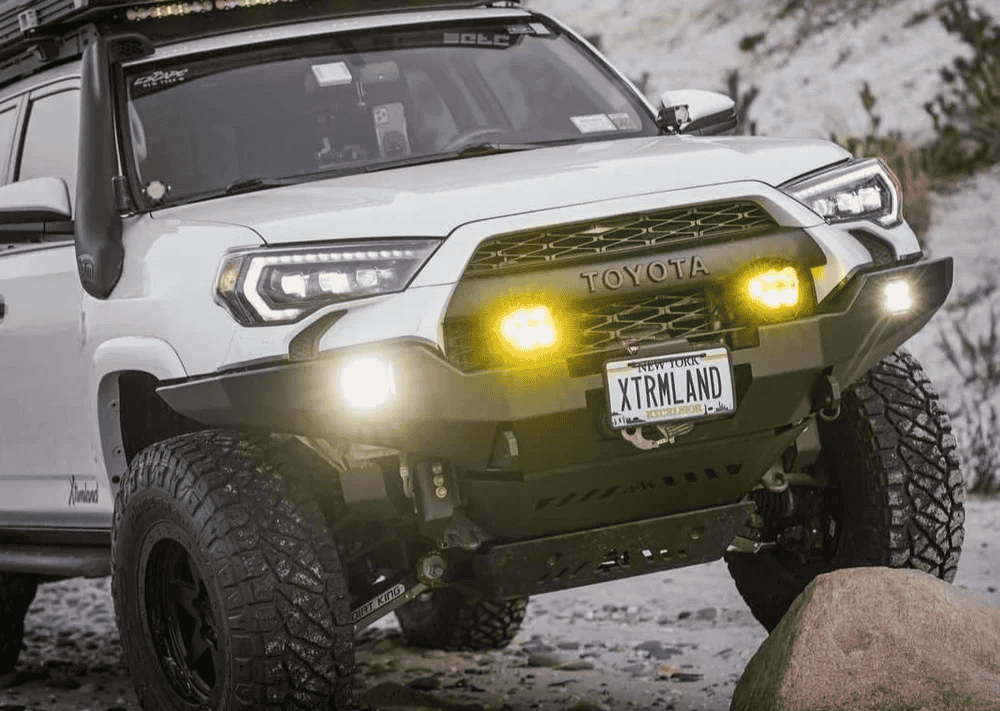Overland Vehicles

The Ram Power Wagon arrives trail biased straight from the factory. Front and rear lockers, a disconnecting front sway bar, and a front mounted winch give it confident traction and control on rocky climbs and washed out tracks. As an expedition platform, those strengths matter because they lower driver fatigue and preserve components when the route gets slow, technical, and uneven.
The other side of the equation is mass. Expedition trim adds water, tools, food, shelter, and power systems. Payload on many Power Wagon trims hovers in the mid one thousand pound range, so every add on should be weighed and justified. Keeping weight low and centered helps steering, braking, and cooling on long grades. Before buying gear, get a scale reading, then plan a loadout that fits within gross axle ratings with margin to spare.
Ground clearance and angles are solid for a full size truck, but tire choice and pressure management make the difference between scraping and gliding. Aim for an all terrain tire that balances sidewall strength with rolling resistance. A thoughtful tire size that fits without rubbing under full compression and steering lock will drive better than an oversized fitment that eats clearance under articulation.
Building a Power Wagon expedition vehicle is about consistent performance day after day, not just one dramatic trail. Think in systems that support each other and that you can troubleshoot in the field.
A quality suspension tuned for the truck’s actual loaded weight controls body motion on washboard and keeps tires in contact with the ground. Choose spring rates that support your permanent load rather than leaning on air bags alone. Damping that resists fade on rough high country roads protects everything bolted to the chassis. Pair this with tire pressures set by weight and temperature to widen the traction window while preserving sidewalls.
Modern expedition travel uses cameras, navigation, refrigeration, lighting, and often cabin comfort solutions. A dual battery or lithium house system with a DC to DC charger decouples camp power from the starter circuit. Solar replenishes during long stops, while alternator charging covers drive days. Size the inverter to the heaviest continuous draw you truly need, and protect the system with proper fusing, cable routing, and ventilation.
The factory winch is a gift, but recovery planning goes beyond the line. Add rated soft shackles, a tree saver, and traction boards, and practice safe rigging techniques. Skid protection and rock sliders preserve cooling, steering, and bodywork when the trail narrows. Lighting that reaches far without glare and a pair of wide flood beams help read terrain at low speeds after dusk. Communications such as GMRS radios and, for remote corridors, satellite messaging provide a safety net when cell coverage vanishes.
An expedition vehicle is a living space on wheels, so organization is as important as torque. The goal is fast setup, fast teardown, and secure travel between stops.
Drawer systems, bed racks, and canopy campers keep essentials accessible and locked down. Heavier items like water, tools, and spares belong forward and low to calm the ride. A full camper or canopy can transform trip flow, but verify total load against the rear axle rating, including passengers and tongue weight if you tow a light trailer for specific trips.
Plan water around the longest segment you will realistically travel, plus a reserve for contingencies. Fixed tanks with secure plumbing reduce spill risk. A twelve volt fridge shrinks ice waste and improves food safety. Shade solutions, simple awnings, and wind management make mealtimes calm in harsh conditions. For sleep, evaluate mattress thickness, ventilation, and condensation control to arrive rested for the next stretch.
Reliable navigation layers maps for public lands, private boundaries, and topography. Calibrate expectations to travel speeds on dirt, not highway time. Keep paper maps and routes stored offline, and log fuel stops that accept large vehicles. A second full size spare or a spare carcass can save a schedule in rocky regions where repair shops are days apart.
Turning a concept into a well mannered Power Wagon expedition vehicle often comes down to integration. Components must work together, fit within payload, and be serviceable when far from town. If you want help transforming plans into a balanced setup, explore our approach to complete rigs on Explore overland rigs. For owners ready to map a parts list into a cohesive install plan, review our Custom overland upfit details for process and scope.
Every route, climate, and crew is different, so the best build serves the way you actually travel. We design around use cases like long desert crossings, forest service loops, and mixed highway to trail weekends. If you are comparing shops or deciding where to start, see how we work and what clients say on Why choose OZK Customs.
Bring your plan, your map, and your wish list. We will dial suspension for loaded weight, install clean onboard power, mount purposeful storage, and wire lighting and comms that make sense on the trail and at camp. The result is a Power Wagon expedition vehicle that drives smoothly, carries what matters, and gets you home with a smile.
Ready to turn your Power Wagon into a true expedition rig? Our team designs and installs complete overland systems, from suspension and power to racks, lighting, and communications. Tell us how you travel, and we will engineer a build that fits your routes, payload, and timeline.
ADDRESS:
6159 E Huntsville Rd, Fayetteville, AR 72701
PHONE:
(479) 326-9200
EMAIL:
info@ozkvans.com